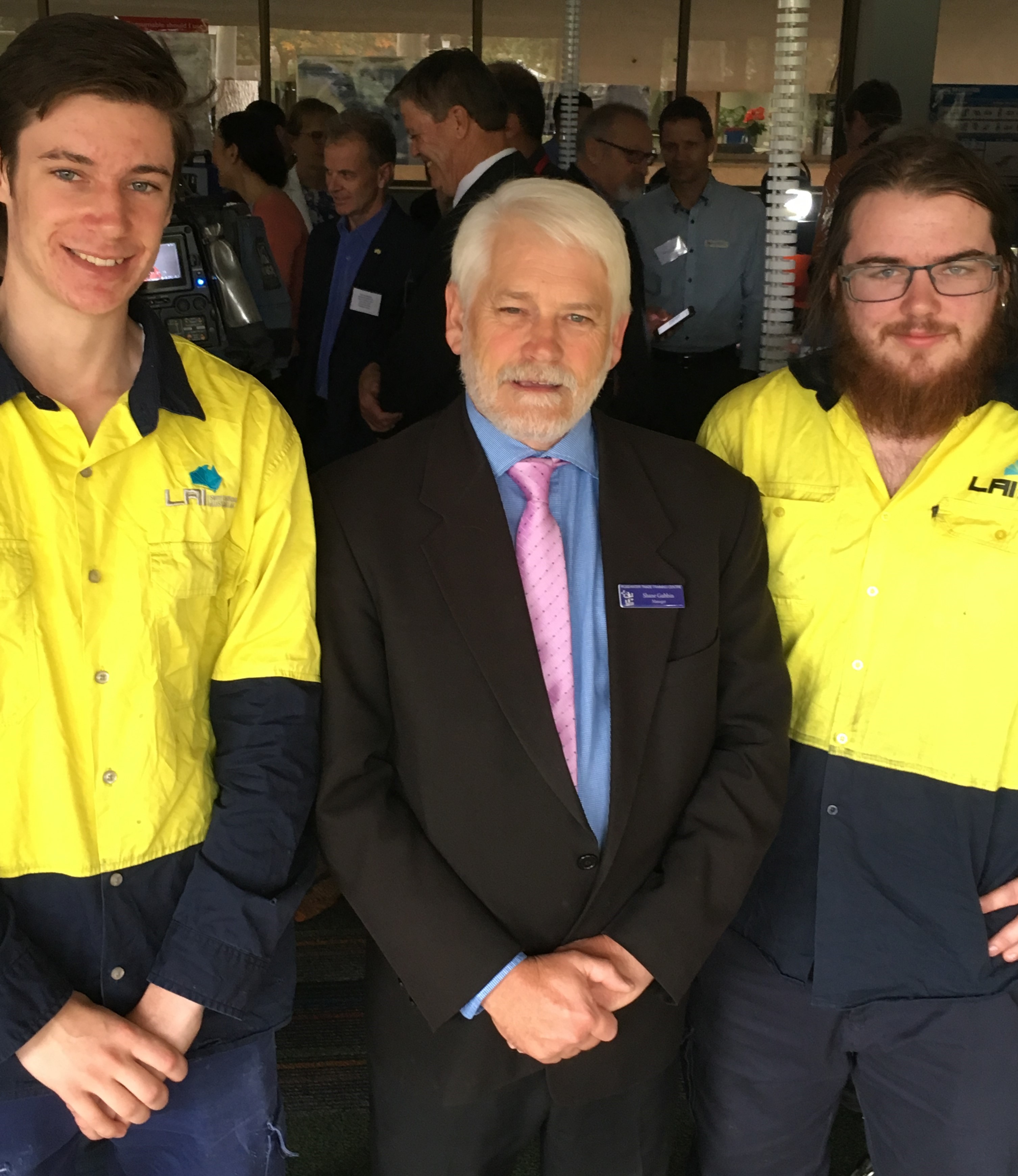
Two 2016 alumni from Rosewater Trade Training Centre were at the opening of the virtual reality TAFE SA (Regency Campus) Advanced Welder Training Centre this week opened by Minister Pisoni, Minister Gardner and Weld Australia's CE Geoff Crittenden. Jesse Reberger and Jacob Raymond are now apprenticed at LAI Switchboards Australia and got the opportunity to 'train the trainer' and show Shane Gubbin, Rosewater Trade Training Centre Manager and Annemarie O'Grady, Industry Connect at Rosewater Trade Training Centre how to VR weld.
TAFE SA’s new state of the art Advanced Welder Training Centre is now delivering training following the installation of 12 welding simulators, which are the most advanced simulators of their kind in the world. The new simulators will ensure that local welders are ready to respond to the increased demand for their skills as part of the naval shipbuilding program and in advanced manufacturing.
The opening of the Advanced Welder Training Centre coincides with a number of industry imperatives including:
‘Australia is facing a significant shortage of qualified and certified welders. Without action, the nation will be unable to meet future demand on major projects in industries as diverse as defence, shipbuilding, aerospace, infrastructure, rolling stock, and resources.
According to a recent employment outlook survey in Australia, skilled trades workers are scarce—38% of Australian employers admit that filling job vacancies is increasingly difficult, mainly due to lack of experience (23%), lack of applicants (21%), and lack of skills (2%).
With a projected employment growth rate of 7.2% expected over the next five years for structural steel and welding trade workers, the welding skills shortage is clearly reaching breaking point in Australia.
This employment growth rate is not surprising given some of the major projects on the horizon. For instance, it is anticipated that the Federal Government’s $90 billion Naval Shipbuilding Program in South Australia will require around 2,600 tradespeople from 2020 to 2027. Almost half of this demand will be for welders.
Augmented and virtual reality training systems are student-focused, allowing individual students to progress at their own pace. Welding apprentices learn and understand welding procedures and techniques through a more interactive training method, gaining hands-on experience in a controlled, safe environment.
With zero risks involved, apprentices can respond to realistic scenarios without pressure or fear of injury. Augmented and virtual reality training is enabling future welders to acquire the skills and the self-confidence they need before moving into real-world workshops.’ Weld Australia 2019.